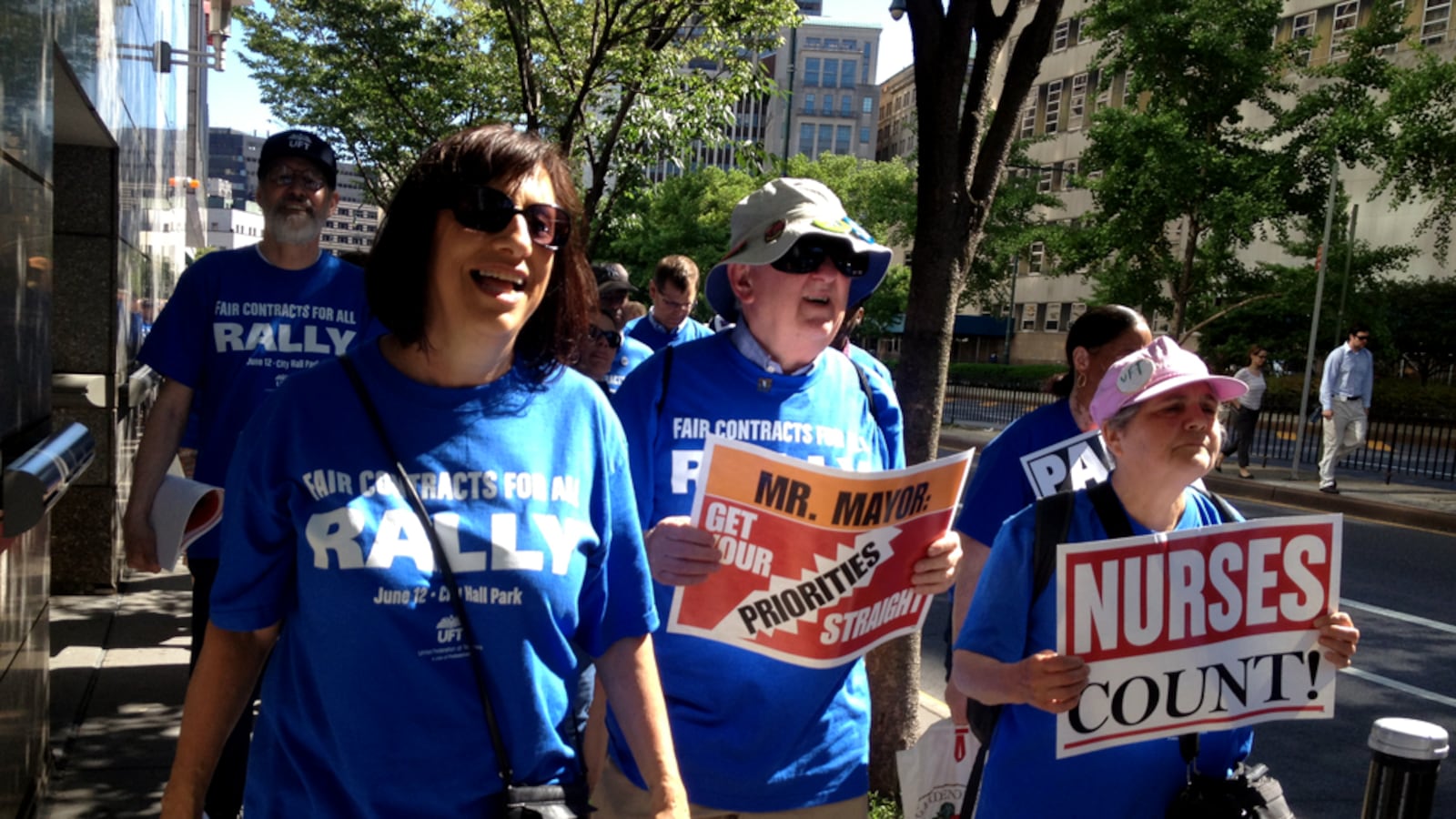As the city and the teachers union move closer to an agreement on a new contract, the issues under the microscope are coming into focus.
We started here with the union’s desire for retroactive pay and the push to find a better solution for the city’s Absent Teacher Reserve.
Also on the table are changes to one of the year’s biggest upheavals: the city’s new teacher evaluation system. Another issue, professional development time, is close to new Chancellor Carmen Fariña’s heart.
3. Tinkering with teacher evaluations
By imposing a teacher evaluation plan on New York City last year, State Education Commissioner John King had the final say one significant piece of the contract. After months of complaints from teachers and principals about the new evaluation system, the city and union are both pining to make changes.
The issue: The evaluations were established last year to comply with a state law that requires districts to use performance ratings for all employment decisions: granting tenure and bonuses, termination, and promotions. This year, some teachers and students have boycotted tests required for teacher evaluations. Principals have also complained about rigid classroom observation rules under the new system.
Principals say the process is so rigid that it’s hard to evaluate instruction and provide feedback to teachers. Principal coach Kim Marshall detailed the challenges in a Chalkbeat post last week, saying that the requirement to score as many parts of a 22-element rubric as possible after each visit was particularly burdensome.
On the table: One area where change is possible is teachers are observations. Fariña wants to make the process is easier and less restrictive, and has told administrators that she’ll try to reduce the number of items that principals are required to measure.
The union has its own requests. Next year, student surveys are set to count for 5 percent of a teacher’s evaluation, but union officials have long been opposed to the idea. They also have raised concerns about how many people can visit a classroom at a time and how disruptive evaluators should be during observations.
Changes to the tests, used to measure student learning, are also likely. The union wants to more alternatives to the tests being administered only to evaluate teachers. Last year, UFT chief Michael Mulgrew said he wanted student work portfolios to count for teacher evaluation decisions, but King rejected the idea because he said it could be too easily gamed.
A state law enacted last month might also add pressure to reduce testing used for evaluations. The law also guarantees that one change to the contract will be to ban standardized tests for students in kindergarten through second grade.
4. Adding time for professional development
In 2005, the city extended the school day by 37-and-a-half minutes, four days a week, for struggling students. More than half of that time was carved out of parts of the school day previously used for department meetings and collaborative lesson planning.
Now, many people say that professional development time needs to be re-prioritized.
The issue: Last year, the city’s former Chief Academic Officer Shael Polakow-Suransky panned that swap as “one of the biggest mistakes” of the 2005 round of contract negotiations.
And just last week, King singled New York City’s contract talks as an example of where districts can negotiate ways to prioritize teacher-to-teacher collaboration. He also took a subtle swipe at the city’s 2005 contract.
“When New York City did their last contract, one of the tradeoffs they made was to reduce professional development time,” King said. “I think there’s an opportunity here, as they work on a new contract to figure out, how will they ensure that there’s real time for teachers to collaborate?”
On the table: Polakow-Suransky’s successors at the Department of Education seem to agree. Fariña is a big believer in giving teachers more time to work together, and has even created an office to oversee professional development.
Finding time in the city’s standard six-and-a-half-hour day will be tricky, so it’s likely that the city is pushing the union to add time to the school day or give schools extra scheduling flexibility in exchange for raises.
One idea could be to allow mandated faculty and grade conferences to take place after 3:45 p.m., an idea floated ahead of 2009 when the two sides last negotiated in earnest.
But timing might not be the only way to improve the way teachers are trained. The union sought an apprenticeship program to better prepare new teachers. The city supported a similar career ladder model that would have paid teachers more to serve in mentorship or leadership roles.
In addition, sources say, one idea being debated is to pilot a “slimmer” contract for a small group of schools that would shed many of the work rules that have been added into the 165-page contract over five decades worth of labor disputes.
Supporters say that for such an important document, it should be accessible for all education stakeholders.
“Trying to understand it if you’re a parent, a teacher, a journalist, is like going through an archeological dig of a lost civilization thousands of years ago,” said Dan Weisberg, a former chief negotiator at the Department of Education.
In 2004, then-Chancellor Joel Klein proposed an eight-page contract, and his UFT counterpart at the time, Randi Weingarten, said she’d be open to trying it out in around 150 schools. Those talks stalled, but the idea has stayed alive.
Weingarten negotiated a unionized charter school contract that included no tenure protections for teachers in 2009 and hailed it as a national model. Since then, a handful of union charter schools have followed suit.
Some district schools worked out deals with the city to try out new models for education. New American Academy in Brooklyn allows teachers to have larger class sizes, work longer hours and get paid differently that other UFT teachers.


